Waterbirds Name Meaning & Image | Water Birds Vocabulary | Necessary Vocabulary
Waterbird related necessary vocabulary notes
Ø Aquatic / əˈkwætɪk / (এˈকোঅ্যাটিক্) n
[living or growing in, on, or near water] (জলজ): aquatic
plants
Ø Terrestrial / təˈrestriəl / (টএˈরেস্ট্রিএল্)
adj [(of animals and plants) living on the land or on the ground, rather than
in water, in trees or in the air] (স্থলজ; পার্থিব):
Ø Adapt / əˈdæpt / (এˈড্যাপ্ট্) v
{Pt. Pp. adapted} [to change ideas
or behavior to make them suitable for a new situation] (খাপ
খাওয়ানো; অভিযোজিত করা): I have had to adapt quickly to the new
system.
<SYN> Adjust
Adaptation /ˌædæpˈteɪʃn / (ˌঅ্যাড্যাপ্ˈটেইশন্) n
[the process of changing something, for example, behavior, to suit a new situation]
(অভিযোজন): adaptation
to the workplace
 |
| Webbed Feet |
Ø Feed / fiːd / (ফীড্) v
{Pt. Pp. fed} [to give food to a
person, group, or animal] (খাওয়ানো; খাদ্য জোগানো): The
animals are fed with hay and grass.
Ø Dive / daɪv / (ডাইভ্) v
{Pt. dived/dove; Pp. dived} [to
jump into the water, especially with your head and arms going in first] (মাথা
নীচের দিক দিয়ে পানিতে ঝাঁপ দেওয়া): She dived headlong into
the ditch.
Ø Prey / preɪ / (প্রেই) n
[an animal, a bird, etc. that is hunted and killed for food by another] (শিকার): a
cat pouncing on its prey
Ø Circle / ˈsɜːrkl / (ˈসাঃর্কল্) v
{Pt. Pp. circled} [to move in a
circle, often in the air] (বৃত্তাকারে ঘোরা; ঘুরে ঘুরে চলা; চক্কর
খাওয়া):
The vultures were already circling around the dead animal.
Ø Overhead / ˈoʊvərhed / (ˈওউভএর্হেড্) adv
[above your head, usually in the sky] (মাথার উপরে; আকাশে): Thunder
boomed in the sky overhead.
Ø Nest / nest / (নেস্ট্) n
[a hollow place or structure that is built by birds or insects to leave their eggs
in to develop, and shelter their young] (পাখির বাসা; নীড়): The
male and female take turns to sit on the nest.
<VERB> Nest // () v [to build a nest, or live
in a nest] (বাসা বাঁধা): Thousands of seabirds are
nesting on the cliffs.
Ø Shore / ʃɔːr / (শোর্) n
[the land along the edge of a sea or ocean, lake, or wide river] (তীর;
কুল; তট; বেলাভূমি): The ship was anchored offshore.
 |
| 2. Crane |
2. Crane / kreɪn / (ক্রেইন) n [a tall metal structure with a long arm, used for
lifting and moving heavy objects] (ক্রেন):
Ø Streamline / ˈstriːmlaɪn / (ˈস্ট্রীম্লাইন্) v {Pt. Pp. streamlined} [to give something a
smooth even shape so that it can move quickly and easily through the air, water or
gas] (দক্ষতর করে তোলা <রীতি বা পন্থার সংস্কারসাধন বা সরলীকরণ
করে>): The body of dolphin is more streamlined than those
of porpoise.
Ø Crayfish / ˈkreɪfɪʃ / (ˈক্রেইফিশ) n [a small animal which lives in rivers and is
similar to a lobster or its flesh as eaten as food] (বাগদা চিংড়ি):
Ø Reptile / ˈreptaɪl / (ˈরেপটাইল) n [any animal that has cold blood and skin covered
with scales and that lays eggs] (সরীসৃপ্): Snakes, Crocodiles are all reptiles.
Ø Stocky /
ˈstɑːki / (ˈস্টাঃকি) adj [short, with
a strong, solid body] (<ব্যাক্তি,
প্রাণী ও উদ্ভিদের ক্ষেত্রে>মোটাসোটা, গাট্টাগোট্টা):
Ø Buff /
bʌf / (বাফ্) n [a pale yellowish color] (হালকা হলুদ রং): a buff envelope buff-brown
Common shelduck / ˈkɑːmən ˈʃeldʌk / (ˈকাঃমএন্ ˈশেলডাক্) n [a type of wild, small short-necked goose in size and
shape, that lives on or near the coast. It is a striking bird, with a
reddish-pink bill, pink feet, a white body with chestnut patches and a
black belly, and a dark green head and neck] (রাজেশ্বরী; শাহ চখা):
Ø Chestnut / ˈtʃesnʌt / (চেছনাট্) n [a deep reddish-brown color] (বাদামি <রং>):
Ø Gregarious / ɡrɪˈɡeriəs / (গ্রিˈগেরিএস্)
adj [(of animals or birds) living in large groups] (দলবদ্ধভাবে
বাস করে এমন; সঙ্গলিপ্সু): Snow geese are very gregarious birds.
Ø Pouch / paʊtʃ / (পাউচ্) n
[a pocket of skin in the mouths of some animals, used for carrying and storing
food] (থলে
বা থলি):
Avocet / ˈævəset / (ˈএ্যাভএছেট্) n [bird that lives on or near water, they have long legs and they sweep their long, thin, upcurved bills from side to side when feeding in the brackish or saline wetlands they prefer. Their plumage is black and white, sometimes also with some red.] (উল্টোঠুঁটি; ঢেঙ্গী):
Ø Brackish / ˈbrækɪʃ / (ˈব্র্যাকিশ্) adj [(of
water) salty, dirty, and unpleasant] (<পানি সম্পর্কে> ঈষৎ লোনা ও নোংরা): brackish
lakes/lagoons/marches
Ø Wetland / ˈwetlænd / (ˈওএটল্যান্ড্) n [a
large area of land covered with swamp or marsh] (জলাভূমি): The wetlands are home to a large
variety of wildlife.
Ø Pied / paɪd / (ফাইড্) adj [(especially of birds) of two or more different
colors, especially black and white] (<বিশেষত পাখি>দো-রংঙ্গা সাদাকাল):
Ø Wade / weɪd / (ওএইড্) v {Pt. Pp. waded}
[to walk with an effort through something, especially water or mud] (<পানি, কাদা ইত্যাদির মধ্য দিয়ে> অতি কষ্টে চলা): I waded across the stream.
Ø Forest / ˈfɔːrɪst / (ফোঃরিস্ট্) n [a large area of land thickly covered with trees and
plants] (বন; অরণ্য; জঙ্গল; কানন): We slashed our way through the dense forest.
Ø Plain / pleɪn / (প্লেইন্) n [a large area of flat land] (সমতল ভূমি): Herds of buffalo
roamed these plains.
Ø Glossy / ˈɡlɑːsi / (ˈগ্লাঃসি) adj [smooth and
shiny] (মসৃণ ও উজ্জ্বল): Her
hair looked soft and glossy.
Ø Downwards /
ˈdaʊn wərdz / (ˈডাউন্ ওএর্ডজ্) adv [towards the ground or towards a lower position] (নীচেরদিকে; নিম্নাভিমুখে): The road slopes gently downwards for a mile or two.
Ruff / rʌf / (রাফ্) n [a medium-sized, long-necked, and pot-bellied bird] (জোয়ালা <পাখি>):
 |
| Pot-bellied |
Ø Pot-bellied /
pɑːt-belid / (পাঃট-বেলীড্) adj [(of people and
animals) having a large stomach that sticks out] (ভুঁড়ো; পেটমোটা): Who
is that potbellied man sitting over there.
Ø Forehead / ˈfɔːrhed / (ˈফোর্হেড্) n [the flat part of the face, above the eyes and below the hair] (কপাল; ললাট):
Plover / ˈplʌvər / (ˈপ্লাভএর) n [a bird with a rounded body, a short tail, a short beak, and long legs that is found mainly by the sea or in areas covered with grass] (ভুতুমে):
Ø Migrate / ˈmaɪɡreɪt / (ˈমাইগ্রেইট্) v {Pt. Pp. migrated} [(of birds, animals, etc.) to
move from one part of the world to another according to the season] (পাখি ও প্রাণী সম্পর্কে) বিশেষ ঋতুতে এক স্থান বা এক দেশ থেকে অন্য স্থানে বা অন্য দেশে পরিভ্রমণ করা): birds that
migrate south in the winter
Ø Widely / ˈwaɪdli / (ˈওআইড্লি) adv [to a
large degree; by many] (বহুলাংশে, ব্যাপোকমাত্রায়): Bengali was widely spoken there.
White stork / waɪt stɔːrk / (ওয়াইট্ স্টোঃর্ক্) n [a large bird in the stork family, its plumage is
mainly white, with black on the bird's wings. Adults have long red legs and
long pointed red beaks] (ধলা মানিকজোড় বা সাদা মানিকজোড়):
Ø Distinctive / dɪˈstɪŋktɪv / (ডিস্ˈটিঙ্কটিভ্) adj [having a quality that makes something different
and easily noticed] (স্বাতন্ত্র্যসূচক): The male bird has distinctive white markings on its
head.
<SYN>
Characteristic
Ø Carrion / ˈkæriən / (ˈক্যারিএন্) n [decaying
flesh of dead animals] (গলিত শব বা মাংস; পূতিমাংস): Crows circled overhead, looking for carrion.
Ø Offal / ˈɑːfl / (ˈআঃফল্) n {US also variety meats} [the organs inside an
animal, such as the brain, the heart, and the liver, cooked and eaten as food]
(প্রাণি দেহের ভিতরের অংশসমূহ, যেমন, কলিজা, মাথা, কিডনি প্রভৃতি):
Ø Opportunist / ˌɑːpərˈtuːnɪst / (ˌআঃপএর্ˈটূনিস্ট্)
adj [someone who tries to get power or an advantage in every situation; not
done in a planned way] (সুবিধাবাদী; সুযোগসন্ধানী): Raju marked his debut match with an opportunist
goal.
Ø Vertebrate / ˈvɜːrtɪbrət / (ˈভাঃর্টিব্রএট্) n [any animal
with a spine, including all mammals, birds, fish, reptiles, and amphibians] (মেরুদণ্ডি প্রাণী):
Ø Resemble / rɪˈzembl / (রিˈজেম্বল্) adj [to look like or be similar to someone or
something] (সদৃশ হত্তয়া; (চেহারায়) মিল থাকা): He closely resembles his brother.
Ø Distribute / dɪˈstrɪbjuːt / (ডিˈস্ট্রিবূট্) v {Pt. Pp. distributed}
[to spread something, or different parts of something, over an area] (ছড়িয়ে দেত্তয়া বা পড়া): Cases
of the disease are widely distributed through Asia.
Little grebe / ˈlɪtl ɡriːb / (ˈলিটল্ গ্রীব্) n [also known as
dabchick, is a member of the grebe family of water birds with a pointed bill] (ছোট ডুবুরি পাখি):
 |
| Frigate |
Frigate /
ˈfrɪɡət / (ˈফ্রিগএট্) n [a small fast ship
in the navy that travels with other ships in order to protect them] (রণতরী):
Ø Gular / ˈɡuːlər / (ˈগূলএর্) n [relating to
or situated on the throat of an animal, especially a reptile, fish, or bird] (প্রাণিদেহের গলার নিচে পাতলা চামড়া):
Waterbird Name Meaning & Image | Water Bird Vocabulary
Noted from Wikipedia; Google Image; Oxford, Cambridge & Collin Dictionary






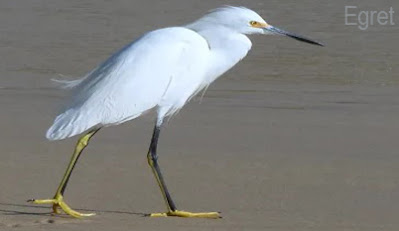





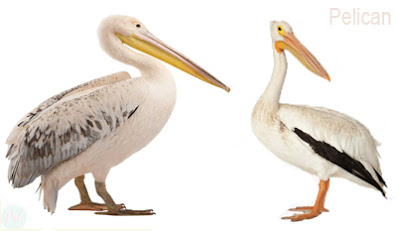
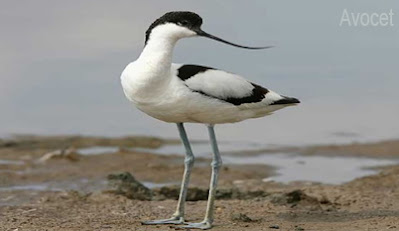

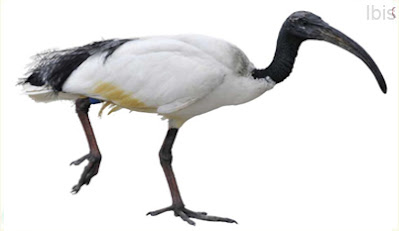







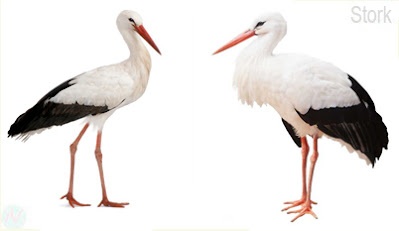
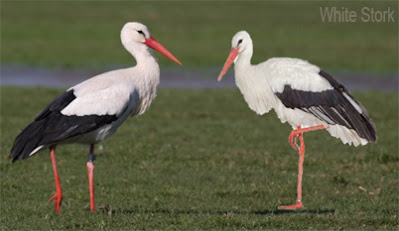




















No comments